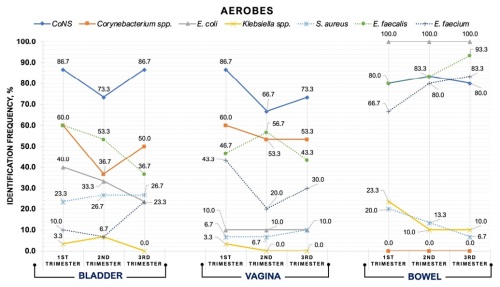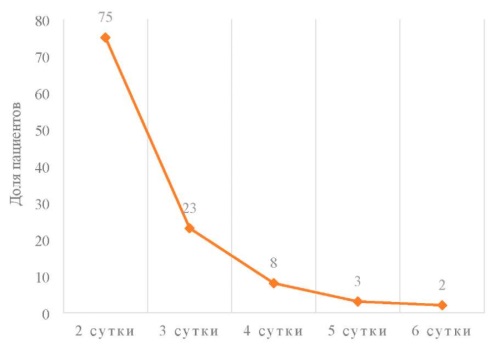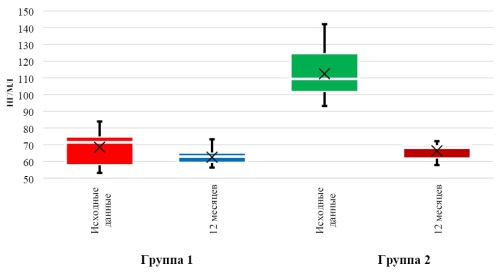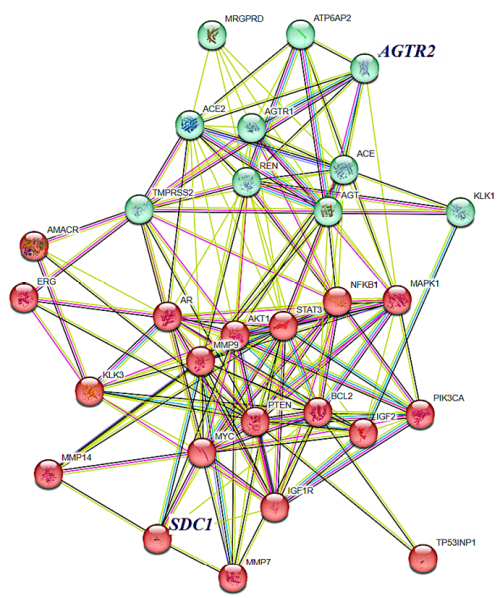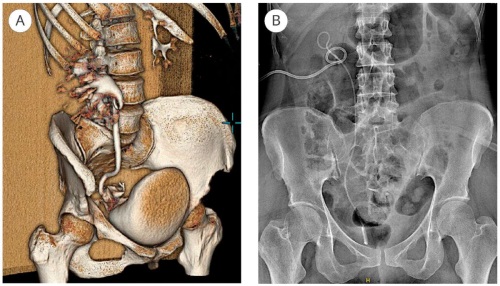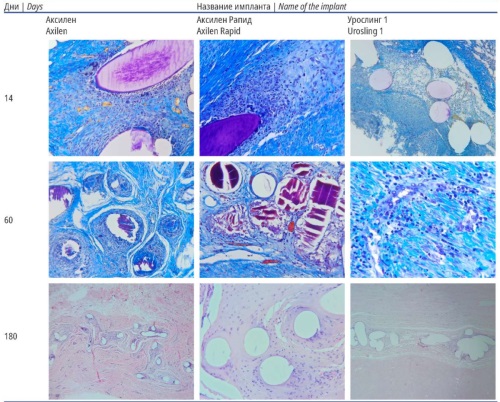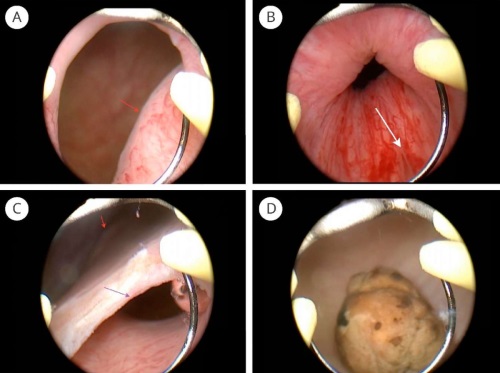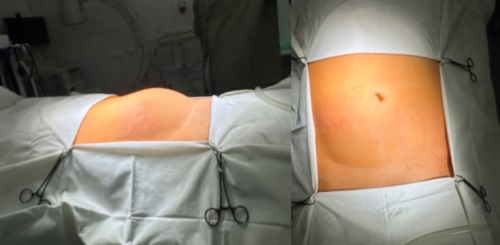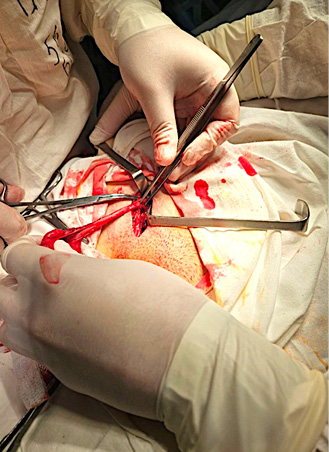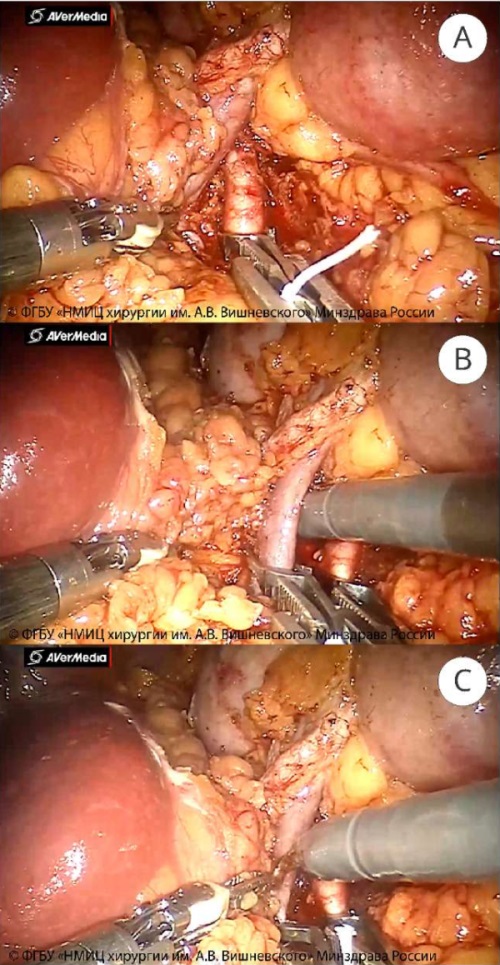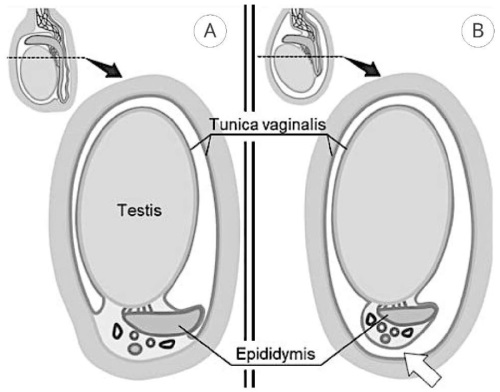EDITORIAL
The article summarises facts, trends, and highlights from the cutting-edge three-year publications on the male and female sexuality that I have read and present to you, dear readers of the journal.
ORIGINAL ARTICLES
Introduction. Benign prostate hyperplasia (BPH) is an enlargement of the prostate due to abnormal proliferation or apoptosis failure of the epithelial or stroma tissues.
Objective. To compare the prostate volume, IPSS score (LUTS scale), and uroflowmetry of BPH patients with type 2 diabetes mellitus.
Materials & Methods. The medical records of BPH patients from 2011 to 2015 were assessed with an analytical retrospective study based on the prostate volume, IPSS score (LUTS scale), and Q max using uroflowmetry. The data were analyzed using the chi-square test by online statistical analysis.
Results. Among 62 patients recorded, 11 patients were diabetic, while the rest were non-diabetic. No notable differences were observed between the two groups (p > 0.05) in prostate volume, IPSS score, and Q max.
Conclusion. No significant differences in prostate volume, IPSS score (LUTS scale), and uroflowmetry between diabetic and non-diabetic BPH patients.
Introduction. The microbiota dynamics of the core biotopes during pregnancy are hardly studied, although changes in these compartments have an important role in both the functioning of the female organism and foetal development.
Objective. To study the dynamics and interactions of changes in bladder, vaginal and bowel microbiota in healthy pregnant women over three trimesters (TRI-1, 2, 3).
Materials & Methods. Study design: a single-centre comparative observational longitudinal study. Thirty out of first-time 220 pregnant women were selected for screening at the antenatal clinic from 2021 to 2022. All pregnant women underwent sampling at T-1, 2, 3: mid-stream bladder urine samples, posterior vaginal swabs and faecal masses were collected for culture study. After a special pre-culture preparation, samples were examined on an expanded set of nutrient media (n = 13) using special cultivation (aerobic-anaerobic) conditions. Based on the research results, identification frequencies (IDFs), microbial load values (MLVs) and microbial co-occurrence coefficients between the different biotopes were estimated.
Results. Culture study revealed various bacteria in each biotope investigated during all TRIs. In the urine, aerobes and anaerobes were observed from TRI-1 to TRI-3 with different IDFs, but no taxa showed a stable IDFs. In the vagina, IDFs of bacteria were similar to urinary. The bowel microbiota was the most stable biotope remained almost unchanged during pregnancy. In the urine and vagina, mean MLVs of most aerobes and anaerobes did not change significantly throughout pregnancy. In the bowel, MLVs were consistently higher than in the urine and vaginal swabs. According to the co-occurrence analysis bladder-vagina and bladder-bowel biotopes showed significantly more interconnections between microorganisms in all TRIs.
Conclusion. The observed microbiota structure during all TRIs is associated with uncomplicated gestation. These results will be valuable for studying changes of microbiota in complicated pregnancies.
Introduction. Predicting the timing of inflammation control in acute obstructive pyelonephritis based on routine laboratory values is of great importance. This is essential for planning the next stage of management to eliminate the cause of obstruction.
Objective. To evaluate the dynamics and prognostic value of systemic inflammatory response markers in the management of acute obstructive pyelonephritis (AOP).
Materials & methods. We performed a prospective study of the dynamics of inflammatory markers in patients with AOP. The study included 113 patients with AOP. Nephrostomy tube was installed in 43 and ureteral stent in 70. Following parameters were assessed: leukocytosis, CRP, creatinine on the days 1-3-7 after drainage, duration of fever. The risk factors for long-term regression of leukocytosis were also investigated.
Results. On post-op day 3, the average leukocytosis was 10.5 (± 2.46) *109, and 68.1% of patients are returned to normal leukocyte level, and on post-op day 7 — 7.9 (± 3.12) *109 and 75.2%, respectively. On post-op day 3, the average CRP level was 14.2 (± 63.95) mg/l, and 32.7% of patients had decrease to target values, on post-op day 7 — 13.1 (± 49.7) mg/l and 56.6%, respectively. On post-op day 6, fever resolved in 98% of patients. Diabetes mellitus was the only statistically significant factor that can influence the long persistence of leukocytosis (p < 0.05).
Conclusion. Leukocytosis showed higher specificity as a marker of inflammatory regression than CRP for AOP treatment. On post-op day 7, 75% of patients demonstrated laboratory and clinical signs for the inflammatory process relief. The presence of diabetes mellitus significantly prolongs the regression of the inflammatory response.
Introduction. The problem of diagnostics and treatment of patients with complex lower urinary tract symptoms associated with benign prostatic hyperplasia (LUTS/BPH) remains highly relevant. Clinical diagnostic methods do not always allow timely prediction of changes in renal, upper and lower urinary tract function with different types of treatment intervention. The search for potential biomarkers allowing minimally invasive assessment of the bladder and renal function condition seems to be a promising direction of scientific research.
Objective. To identify potential urine and serum biomarkers allowing to assess renal function in patients with LUTS/BPH.
Materials & methods. The study included 69 patients with LUTS/BPH and subsequently divided them into two groups. Group 1 included 48 patients with moderate LUTS who received combination therapy with alpha-1 adrenergic blockers (AABs) and 5-alpha reductase inhibitors (5ARIs). Group 2 included 21 patients with severe LUTS/BPH. Patients of group 2 underwent surgical treatment: transurethral resection of the prostate. In addition to standard research methods (IPSS, voiding diaries, laboratory, urodynamic and radiation techniques), to search for potential biomarkers in serum and urine, concentrations of: insulin-like growth factor binding protein-7 (IGFBP7), B-Cross Laps, Cystatin C, OPN, trefoil factor (TFF3), uromodulin, Clusterin, lactate dehydrogenase (LDH). The follow-up period for patients was 12 months.
Results. The study noted that IGFBP7, Cystatin C, TFF3 in the blood serum, as well as LDH, Clusterin in the urine are associated with the severity of LUTS/BPH. Serum biomarker levels were initially higher in patients with severe LUTS compared to patients with moderate LUTS (group 1). The levels of these substrates decreased in patients of all groups during treatment (conservative therapy, surgical interventions for BPH). When assessing urinary biomarkers, the greatest decrease in Clusterin level by the end of follow-up was registered in group 1 patients, the least pronounced in group 2 patients. The initial value of LDH was twice higher in group 2 vs group 1 and progressively decreased after surgical treatment of bladder outlet obstruction.
Conclusion. Biomarkers used to assess renal dysfunction in the development of LUTS/BPH are a promising area of scientific research. Panels of new markers will enable to predict renal dysfunction in patients with moderate-to-severe LUTS, which will improve the quality of medical care for this category of patients.
Introduction. Prostate cancer (PCa) remains an urgent problem of modern oncological urology due to high morbidity and mortality rates.
Objective. To evaluate the expression of angiotensin II type 2 receptor (AT2-R) and syndecan-1 (CD138) receptors in prostatic intraepithelial neoplasia (PIN) and PCa.
Materials & methods. For the immunohistochemical (IHC) study, the prostate biopsy cores of 20 men was used: 10 men with PIN, 10 men with PCa. Primary antibodies to AT2-R and CD138 antibodies were used for IHC staining, the EnVision FLEX imaging system. Formulation of IHC reactions, interpretation of the results obtained were carried out according to generally accepted rules.
Results. The results of the study showed that AT2-R deficiency increases in the range of PIN-3 – PCa. Mild AT2-R expression or its absence was noted in tumor cells with PCa, while the AT2-R localisation was nuclear. In PIN-3, the expression of syndecan-1 was localised on the membrane of basal cells and the basolateral side of secretory epithelial cells, without expression in the adjacent stroma, while the expression level of syndecan-1 always remained high. In PCa, the membrane expression of syndecan-1 was preserved. With a decrease or absence of AT2-R nuclear expression in PCa tissue with an increase in ISUP, the expression level of syndecan-1 decreased.
Conclusion. Simultaneous decrease in the expression levels of AT2-R and syndecan-1 in PCa has been demonstrated for the first time. A comprehensive determination of the expression levels of AT2-R and syndecan-1 seems to be promising for the development of diagnostic and prognostic markers of PCa initiation and development.
Introduction. Ureteral traumas account for approximately 3% of all urinary tract injuries. Up to 38 – 80 % of ureteral injuries are misdiagnosed. Consequently, missed ureteral injuries lead to the development of complications.
Objective. To determine the comprehensive management for early complications of ureteral injuries.
Materials & methods. From 2000 to 2022, 46 patients with early complications of various mechanisms, types, and severity of ureteral injuries were treated at the Dzhanelidze Research Institute of Emergency Medicine. The severity of ureteral injury complications was determined using the Clavien-Dindo classification system. Reconstructive and staged operations were performed in the treatment of ureteral injury complications.
Results. Fourty-three patients (93.5%) had iatrogenic injuries, 2 (33.3%) had blunt traumas, and 1 (2.2%) had an open injury. Ureteral injuries included rupture, ligation, endoclips compression, and thermal injury. The type of ureteral trauma determined the development of early complications. Ureteral ligation and endoclips compression led to the development of acute renal colic, hydronephrosis, and obstructive pyelonephritis. Ureteral rupture and thermal injury were complicated by urinary leaks and peritonitis. According to the Clavien-Dindo classification, the complications were IIIb and IV grade. Staged procedures were performed for the treatment of ureteral injuries complications in the presence of infection. In other cases, reconstructive operations were performed on hemodynamically stable patients with ureteral injury complications.
Conclusion. The choice of management for early complications of ureteral injuries depends on the patient's condition, the presence of infection, the mechanism, type, and localisation of the ureteral trauma.
Introduction. It is well-known that the use of transvaginal mesh implants is not devoid of specific complications that meaningfully impair the quality of life of female patients. The volume of permanent material used has been shown to correlate closely with the risk of implant-associated complications. Thus, there is a need to develop a new generation of implants that retain the advantages of a permanent mesh implant but with minimal risk of implant-associated complications. Meanwhile, there are insufficient data on the organism's response to this type of synthetic implant.
Objective. To compare the histological changes in the soft tissues of the rabbit anterior abdominal wall in the implantation zone of the new generation partially resorbable implant and non-absorbable polypropylene mesh implant on the animal model.
Materials & methods. We have previously developed a partially resorbable ligature delivery system for axial fixation of pelvic floor structures, performed technical analysis, and compared biomechanical and pathomorphological properties after implantation in an animal model experiment. The present study was conducted on 39 male rabbits of Chinchilla breed, randomised into three groups according to the type of implanted material: a partially resorbable ligature delivery system Axilen and Axilen Rapid [Lintex, LLC], and a non-resorbable polypropylene mesh implant Urosling. After the rabbits were removed from the experiment, the obtained biomaterial was subjected to histological study.
Results. In the group with partially resorbable implants Axilen and Axilen Rapid, less inflammation and better tissue integration were observed compared to the polypropylene implant Urosling. This indicates a potential reduction in the risk of postoperative complications and an improvement in the quality of life for patients.
Conclusion. The results of the experimental study confirm the advantages of using partially resorbable implants over traditional polypropylene meshes in pelvic floor reconstructive surgery. However, further research is needed to confirm the long-term safety and effectiveness of the new generation of implants.
CLINICAL CASES
Ectopic ureterocele is a rare anomaly of the upper urinary tract, often accompanied by the growth of secondary stones caused by impaired urinary outflow. The article presents a clinical case, which shows the peculiarities of diagnosis and possibilities of surgery of this condition, including minimally invasive endoscopic interventions. Emphasis is placed on the consideration of different surgical approaches and their effectiveness in improving the quality of life of patients. Comparative analysis of different techniques shows that endoscopic correction, despite some limitations, remains the preferred option due to the low incidence of complications and rapid rehabilitation.
Introduction. Testicular germ cell tumor (GCT) is a rare pathology that accounts for about 1% of all malignant neoplasms in men, while cryptorchidism is one of the main risk factors. We present a clinical case of a GCT of an undescended testicle in patient with bilateral cryptorchidism and male to female sexual characteristics.
Objective. To present a rare clinical case of testicular GCT in a patient with disorder of sex development (DSD).
Clinical case. A 32-year-old patient with a history of bilateral cryptorchidism with a large neoplasm of the right undescended testis was detected during examination at the Department of Andrology and Oncourology No. 6 of the Pavlov State Medical University. Based on MRI scans, a cavity formation interpreted as an enlarged left seminal vesicle was fixed to the lower pole of the right testicle. Bilateral removal of the left and right testicles (tumour-affected) was performed. The seminal duct was detected from the lower pole of the formation, passing into a blindly ending soft tissue cavity formation (in shape and structure resembling a uterus) — its removal was performed. Histological examination showed that the neoplasm was a typical seminoma of the right testicle, pT2. The soft tissue cavity was represented by a rudimentary uterus with fallopian tubes. Adjuvant chemotherapy was performed.
Conclusion. We demonstrate a rare clinical case of a GCT of the undescended testis in a patient with bilateral cryptorchidism, DSD (46, XY), and Müllerian duct persistence syndrome. These nosologies require early diagnosis and treatment.
EXCHANGE OF PRACTICAL EXPERIENCE
Introduction. Inguinal ectopic testis is a rare complication after inguinal hernia repair. In modern literature, there are few articles devoted to this problem.
Objective. To study the testicular elevation mechanisms after inguinal hernia surgery in children and methods to treat this complication.
Materials & methods. A cross-sectional retrospective analysis of medical records of male children who underwent inguinal plasty between January 2018 and December 2023 was performed at the Chelyabinsk Regional Children's Clinical Hospital. Those who underwent subsequent orchopexy for ipsilateral cryptorchidism were identified. Cryptorchidisms that were misdiagnosed were excluded.
Results. A total of 1140 boys with inguinal hernias were treated, of which 978 (86%) were operated on laparoscopically using the PIRS technique, and 162 (14%) underwent open hernia repair. In nine (0.7%) children, an ectopic testicle in the groin was detected after surgery. During orchiopexy, extensive adhesions and scars in the inguinal canal were found only in two cases after open plastic surgery. The processus vaginalis remained intact after laparoscopic repair and partially after open hernia repair.
Conclusion. Ectopic testicles in patients undergoing inguinal hernia repair can be successfully treated with orchiopexy performed through the inguinal approach.
The paper presents the results of surgical treatment of 14 patients with renal masses undergone partial nephrectomy on the Da Vinci Si and Da Vinci Xi robotic systems using ‘drug & cold’ ischemia. The advantages of the original technique, such as long-term safe renal ischemia, nephron sparing, minimal blood loss with no hemotransfusions and short length of hospital stay were presented.
Introduction. In a series of studies, patients with intermittent testicular torsion (ITT) have a 29% to 50% chance of gonad loss. The «bell clapper» type testicular fixation abnormality is a predisposing factor for TT. In cases of ITT, episodes of hemiscrotal pain attack are not a sufficient reason to scrotal revision, which makes it important to develop imaging techniques to document the presence of anatomical preconditions for ITT.
Objective. To find a methodology beneficial in solving the problem of documenting the anatomical preconditions for ITT.
Materials & methods. To diagnose anatomical preconditions of ITT, we have developed a method of ultrasound. Ultrasound can be used to prove the presence of a “bell clapper» deformity by visualizing the spermatic cord proximal to the testis surrounded by fluid. Fix the testis with a slight traction in a caudal direction while moving the fluid inside the sheaths upward. Place the transducer over the spermatic cord in a horizontal position. The fluid is displaced abnormally high along the spermatic cord within the peritoneal vaginal sheath and surrounds the spermatic cord on all sides, allowing good visualization of the spermatic cord above the testis within the testicular sheaths. If we continue with the bell analogy, the resulting ultrasound picture can be called «bell clapper rod» symptom. A patient with an ultrasound-derived «bell clapper rod» symptom can be diagnosed with a testicular fixation anomaly that creates anatomic conditions for intermittent testicular torsion. The ultrasound arguments obtained allow us to confidently form indications for testicular fixation.
Results. Eight patients were examined according to the described method, all of them showed the symptom of ‘bell clapper rod’, and testicular fixation was recommended. The average age of the patients was 12.4 years. The average time after scrotal pain resolution was 8 hours (from 1 to 18 hours). All eight patients had intraoperative verification of abnormal testicular fixation of the ‘bell clapper rod’.
Conclusion. A patient with the acute hemiscrotal pain and then its spontaneous disappearance with the ultrasound-derived «bell clapper rod» symptom can be diagnosed with a testicular fixation anomaly that creates anatomic conditions for ITT. Preoperative diagnosis based on ultrasound combined with clinical data transforms the ITT from a diagnosis of exclusion to a diagnosis based on proven anatomical preconditions for testicular torsion. The ultrasound arguments obtained allow us to confidently form indications for testicular fixation.



